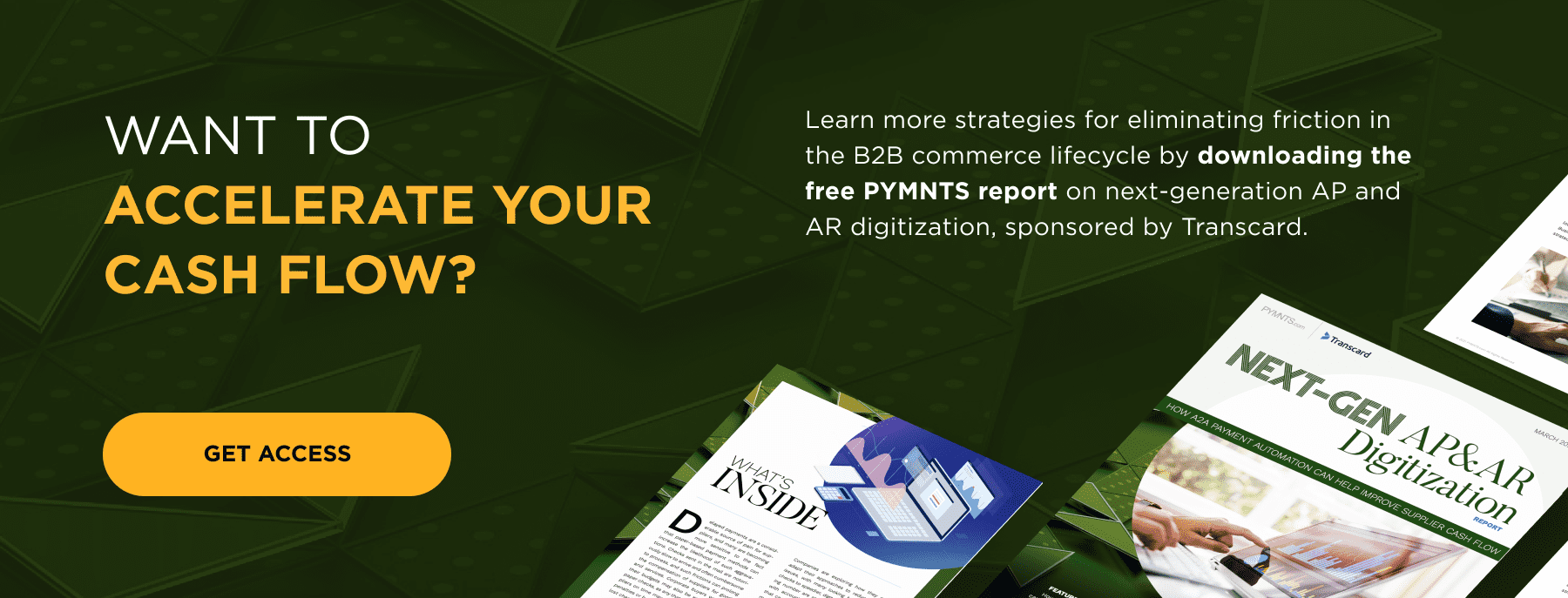Payments are evolving rapidly.
 New payment methods.
New payment methods.
New delivery channels.
New expectations.
Now is the time to focus on what the modern payments platform has to offer.
Making payments with point solutions and closed-loop networks is quickly becoming a thing of the past. Banks, businesses, and fintechs are capitalizing on the many benefits that can be achieved by embedding payments into their legacy software and enterprise resource planning (ERP) applications.
The Operational and Strategic Value of ERP Integration
The payments ecosystem has changed a lot in the past few years. Now the platforms that support all these types of business and consumer payments and their related data must adapt.
But how?
Banks, businesses, and fintechs have a lot invested in their ERPs and legacy systems. Extending the value of those systems, while keeping pace with advancements in payments and ever-increasing customer expectations, can be tricky. Fortunately, there is an answer available, thanks to embedded payments.
By embedding payments into legacy software and ERP applications, banks, businesses, and fintechs can streamline the process of making and receiving payments, accelerate payments, eliminate payment and data silos, speed time-to-market, and deliver a seamless customer experience.
Banks, businesses, and fintechs no longer need to maintain unique logins and passwords, account requirements, file formats, or proprietary integrations for separate payment systems. And they can toss out the thick binders of logins and passwords for their various payment networks.
Users can pay or get paid using any payment type or payment network without ever leaving their legacy systems. And rich payments data flows directly to their software or ERP, reducing inefficiency, cost, and risk.
Thanks to embedded payments, payments are sent and received easier, faster, and more securely.
Going forward, embedded payments can help banks and businesses stay on the cutting edge of payment technology such as Real Time Payment (RTP). Embedded payments can serve as a transaction engine inside familiar systems.
The technology enables banks and businesses to add modern payments capabilities to core systems that weren’t built for today’s payments needs. And embedded payments can be critical to delivering an exceptional, personalized customer experience.
As examples, embedded payments provide businesses with a new way to manage:
![]() Patient Refunds
Patient Refunds
![]() Claims Payouts
Claims Payouts
![]() Travel Disruption Refunds
Travel Disruption Refunds
![]() Legal Settlements
Legal Settlements
![]() Security Deposit Refunds
Security Deposit Refunds
Embedded payments also enable customers to make payments without changing applications.
And fintechs won’t have to try to do it all. They can easily integrate proven payments technology into their software, generating new revenue streams, enhancing their user experience, freeing development staff to focus on core technology, and avoiding the Herculean task of keeping up with ever-changing compliance standards and security threats.
The open APIs in embedded payments solutions also enable fintechs to quickly seize upon market opportunities, without having to kick off a long and expensive development project. Embedded payments can support a fintech’s growth.
All this is made possible with the following attributes of embedded payments:
![]() Support for any payment type: Multi-rail capabilities make it easy to disburse or receive payments using any payment method or open payment network. And embedded payment solutions work for business-to-business (B2B) and business-to-consumer (B2C) payments.
Support for any payment type: Multi-rail capabilities make it easy to disburse or receive payments using any payment method or open payment network. And embedded payment solutions work for business-to-business (B2B) and business-to-consumer (B2C) payments.
![]() Seamless payments: Disburse or receive payments instantly or schedule payments in advance to one or more customer or supplier within the software or ERP.
Seamless payments: Disburse or receive payments instantly or schedule payments in advance to one or more customer or supplier within the software or ERP.
![]() Faster cash flow: Apply payment terms from directly within the ERP application. And the easy integration provided by embedded payment solutions improves treasury connectivity.
Faster cash flow: Apply payment terms from directly within the ERP application. And the easy integration provided by embedded payment solutions improves treasury connectivity.
![]() Streamlined processing: Upload payment data directly to an ERP application for real-time reconciliation and touch-free accounts receivable and accounts payable processing.
Streamlined processing: Upload payment data directly to an ERP application for real-time reconciliation and touch-free accounts receivable and accounts payable processing.
![]() Effortless onboarding: Built-in supplier onboarding drives electronic payment adoption.
Effortless onboarding: Built-in supplier onboarding drives electronic payment adoption.
Payment Modernization Starts Here
Embedded payment solutions are redefining the way business gets done. Legacy software and ERP applications are central to the commerce ecosystem. But advancements in payments and rising customer expectations are making it harder for core systems to keep pace.
By embedding payments capabilities into legacy software and ERP applications, banks, businesses, and fintechs can modernize their payments, differentiate their customer experience, and become more adaptable.
Is Your Organization Ready To Modernize Its Payments?





